The tulips have faded, what to do next, how to preserve and plant the bulbs

Tulips - the favorite flowers of many girls, so tender and touching, bright in spring, they delight the eye not only on holidays, but also in flower beds at dachas and plots. But nothing lasts forever and the moment comes when the tulips have faded and the question arises: what to do with them next?
Content:
- Correct actions after flowering buds
- The tulips have bloomed, but what should be done next with the bulbs?
- How to disguise wilted plants and make a flower bed beautiful?
- How to dig up tulips correctly?
- Planting tulip bulbs in the ground
Correct actions after flowering buds
To understand how to care for it and what actions to take, it’s worth studying a little about the history of this flower and its genetics. The plant is native to Asian countries with early spring and dry summers.
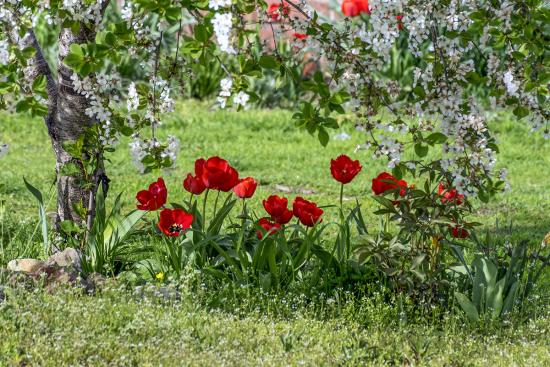
The life cycle of a flower looks like this:
- Vegetation in March, April and May
- Period flowering
- Bulb ripening, appearance of “babies”
- Peace
- Transplantation in autumn
- Peace
- Vegetation
That is why all the gardener’s actions should be focused on the full ripening of the bulbs, strong and strong.
The tulips have bloomed, but what should be done next with the bulbs?
After flowering, the bud itself is removed, but the plant needs to be watered for at least another 15-20 days. During the same period it is recommended feeding for better growth and ripening of bulbs. For feeding, fertilizers containing phosphorus and potassium are used.But under no circumstances with chlorine and nitrogen!
The leaves are cut off at the moment when they completely turn yellow, otherwise there is a high risk of stopping the growth of the underground parts of the plant. But the flowers and the basket with seeds are given away immediately so that they do not take away the excess juices and strength of the plant.
How to disguise wilted plants and make a flower bed beautiful?
Dried and wilted leaves and stems do not look as aesthetically pleasing as flowers and bright greenery. This can be corrected by camouflage with other plants.
Flower growers plant annual seedlings nearby: marigolds, calendula, salvia, zinnia, display elegant pots with pelargonium, begonia, and petunias. Or you can choose annuals such as chrysanthemums and dahlias, which will go wild until frost.
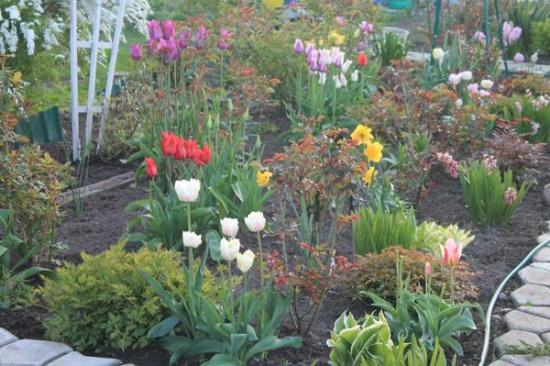
Or think about this question even before planting, and plant the flowers immediately in the basket, and when they fade, dig them up along with the baskets and move them deeper flower garden or garden for further care.
Proper agricultural technology for digging up material for future planting. What should you do in the open ground when the tulips have bloomed, how, and most importantly, when should you start digging?
In areas with a warm climate, digging begins earlier, towards the end of June, in the middle zone from mid-July, when the stems and leaves finally turn yellow and even acquire a brownish tint. If you do not dig up the bulbs for several years, they become noticeably smaller and the variety is bred.
How to dig up tulips correctly?
They begin work on a warm day, and when it is damp, the bulbs are rinsed with water and immediately dried, but not in the sun.
Start with early varieties first, and then as they bloom. Damaged ones are removed immediately.Healthy bulbs are treated with a pink solution of potassium permanganate or a fungicide.
Underground part tulips They dig them up, dry them well, remove everything unnecessary from them: roots, scales, remove unhealthy or damaged ones, and also arrange them by size.
Store before planting for approximately 50-60 days in optimal, most suitable conditions for the correct formation of the peduncle for the next year. Initially, a room temperature of up to 25 degrees is desirable, after a month it is lowered to 15 degrees, and before planting it is brought closer to the biological norm of 10 degrees.
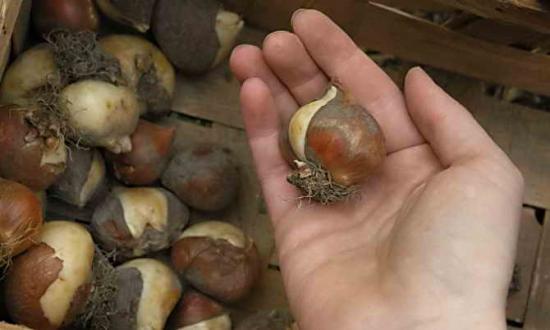
You must try to comply with these temperature requirements, since at this moment the laying of leaves, buds, and peduncles is formed. The bulbs are poured in 1-2 standing positions for full access of oxygen into cardboard boxes and paper bags. Throughout storage, you need to periodically inspect the planting material and throw away any rotten or dried material.
Planting tulip bulbs in the ground
Towards the end of September, planting material again disembarks into the ground, it is advisable to choose a sunny day with a temperature of 5-8 degrees. The bulbs are soaked briefly in a solution of potassium permanganate just before planting.
It’s worth looking for a new place where tulips have not yet grown; you can add sand if the soil is heavy. The planting depth is approximately equal to five times the size of the bulb itself, and the distance between them should be approximately 12 cm.
It is important to know that the planting material must be well rooted, but the deeper it is in the ground, the higher the risk of fungal contamination. The plant is covered with soil and watered well.
Then they are fed with wood ash or ammonium nitrate.. Mulching before cold weather, add a small layer of humus.
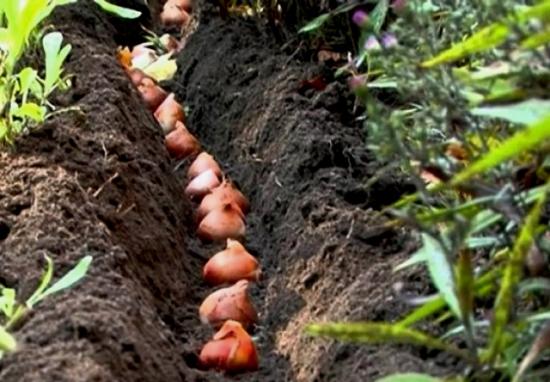
With these simple techniques you will preserve your favorite varieties of flowers and be able to multiply them. What material you plant will determine what kind of plants you will grow and how you will bloom, so choose large, smooth, strong bulbs.
To grow beautiful, healthy tulips It is necessary to adhere to the rules for caring for a flower during its entire life cycle. You can learn about care during a particularly important period for the plant after the buds wither and the leaves dry out, as well as what to do next when the tulips have bloomed by watching the video:





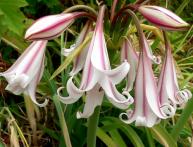





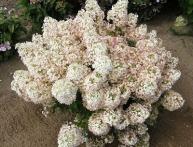
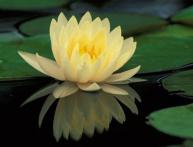
Comments
Tulips can be planted not only in the ground, but also in a greenhouse for forcing by March 6th. In order for the bulbs to grow, a cooling period of several weeks is needed. For planting, take even bulbs weighing at least 20 grams.